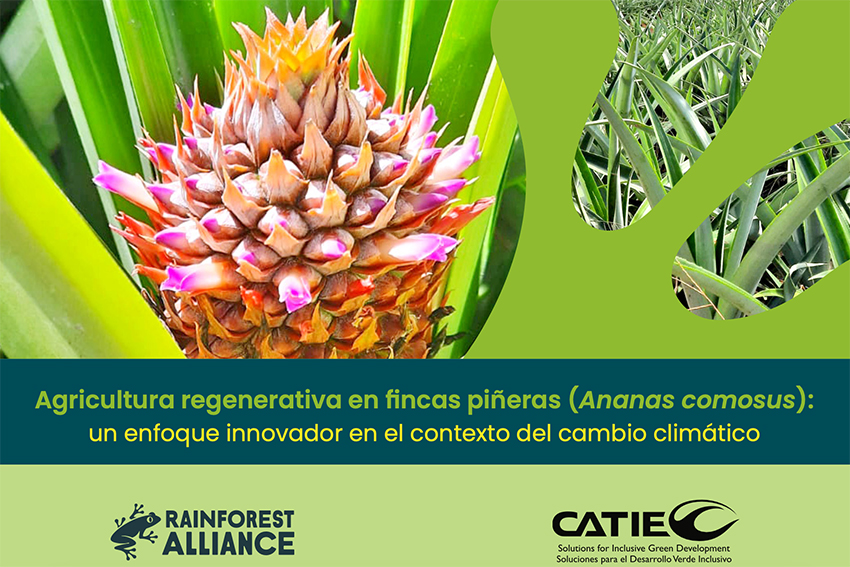CATIE and Rainforest Alliance Launch Regenerative Agriculture Guides for Pineapple Production

- The Technical Manual and the Producer's Guide titled "Regenerative Agriculture in Pineapple Farms (Ananas comosus): an Innovative Approach in the Context of Climate Change" are available to the general public.
December 18, 2023 – The Tropical Agricultural Research and Higher Education Center (CATIE) and Rainforest Alliance have joined forces to showcase the potential of creating regenerative agriculture models for pineapple production, both in Costa Rica and other pineapple-producing countries. This initiative serves as a solution to conventional pineapple cultivation methods, which have been criticized for their environmental impact.
Regenerative-focused agricultural production systems offer solutions to two of the most pressing global challenges: the climate crisis and biodiversity loss. They also promote more equitable lifestyles and productive agricultural systems.
Through a collaborative agreement between the two organizations and partnerships with COOPEPIÑA and NICOVERDE, an intensive process of technical-scientific documentation, farm visits, interviews with producers, and technical personnel has taken place over the past year.
This effort laid the groundwork for a theoretical-practical proposal for the ecological intensification of pineapple production systems (Ananas comosus) through the design and implementation of regenerative production systems.
As a result of this process, the two organizations have developed a Technical Manual and a Guide for Producers titled "Regenerative Agriculture in Pineapple Farms (Ananas comosus): an Innovative Approach in the Context of Climate Change."
Download the Technical Manual here and the Guide for Producers at this link.
Elias de Melo, researcher at CATIE's Agroforestry and Coffee and Cocoa Genetic Improvement Unit, stated that these documents provide a framework for designing production systems that meet criteria for soil restoration, biodiversity, landscape, and water.
"The guides employ strategies adapted to different production conditions and are committed to climate change adaptation and mitigation, while ensuring productivity and profitability."
Elena Nera, Senior Associate of Agricultural Production Systems at Rainforest Alliance's Forestry and Agriculture Unit, commented that biodiversity conservation and the integration of trees into agricultural landscapes are fundamental aspects of regenerative agriculture and represent innovative elements in pineapple production.
"With the dissemination of these guides, we hope to reach producers and the professionals who support them to promote regenerative pineapple cultivation and integrated landscape management."
De Melo added that CATIE and Rainforest Alliance have been working for several years to introduce the concept of regenerative agriculture to producers, institutions, and companies. This collaboration has sparked interest in redesigning pineapple production systems with a regenerative focus.
Juliana Jaramillo, Global Leader of Regenerative Agriculture at Rainforest Alliance, expressed the desire that the validation of different designs in various contexts leads to the transformation and strengthening of pineapple production, aligning it with urgent changes in production systems.
More information:
Elias de Melo Virginio Filho
Researcher
Agroforestry and Coffee and Cocoa Genetic Improvement Unit
CATIE
eliasdem@catie.ac.cr
Elena Nera
Senior Associate, Agricultural Production Systems
Forest and Agriculture Unit
Rainforest Alliance
enera@ra.org
Written by:
Kattia Bermúdez Mora
Coordinator
Communications and Marketing Office
CATIE
kattia.bermudez@catie.ac.cr



